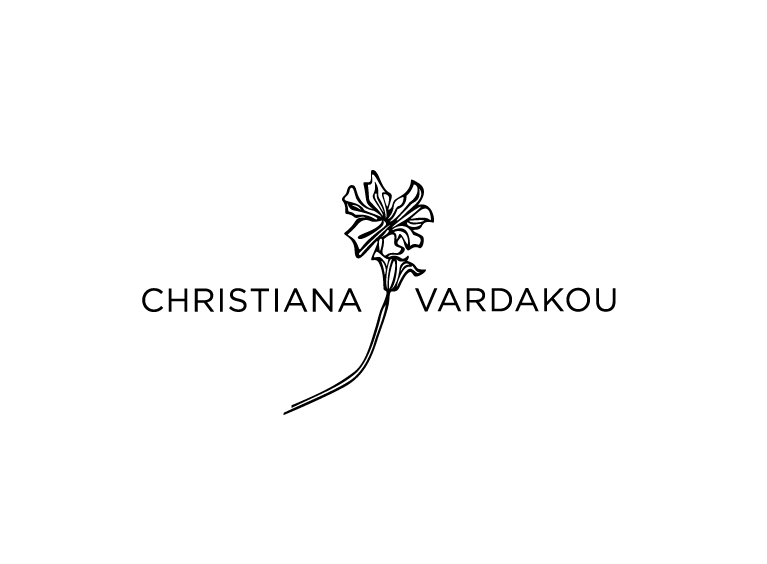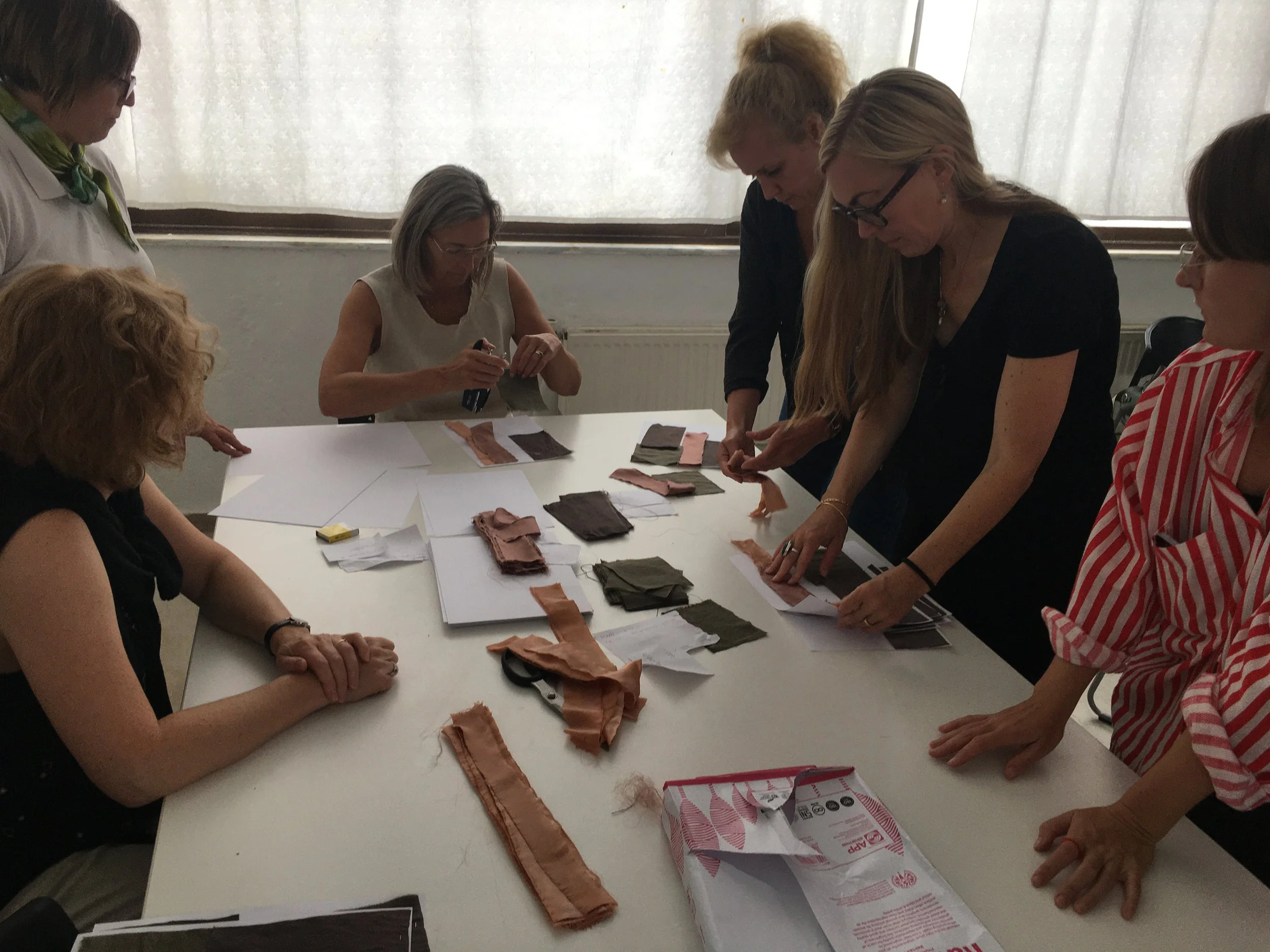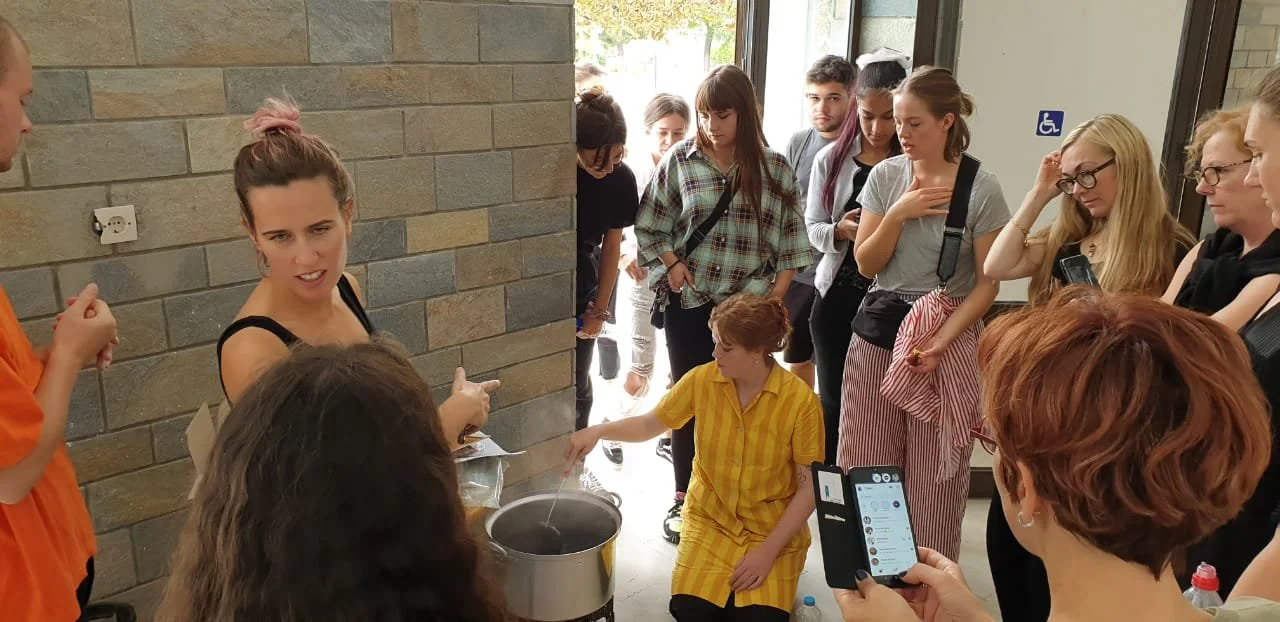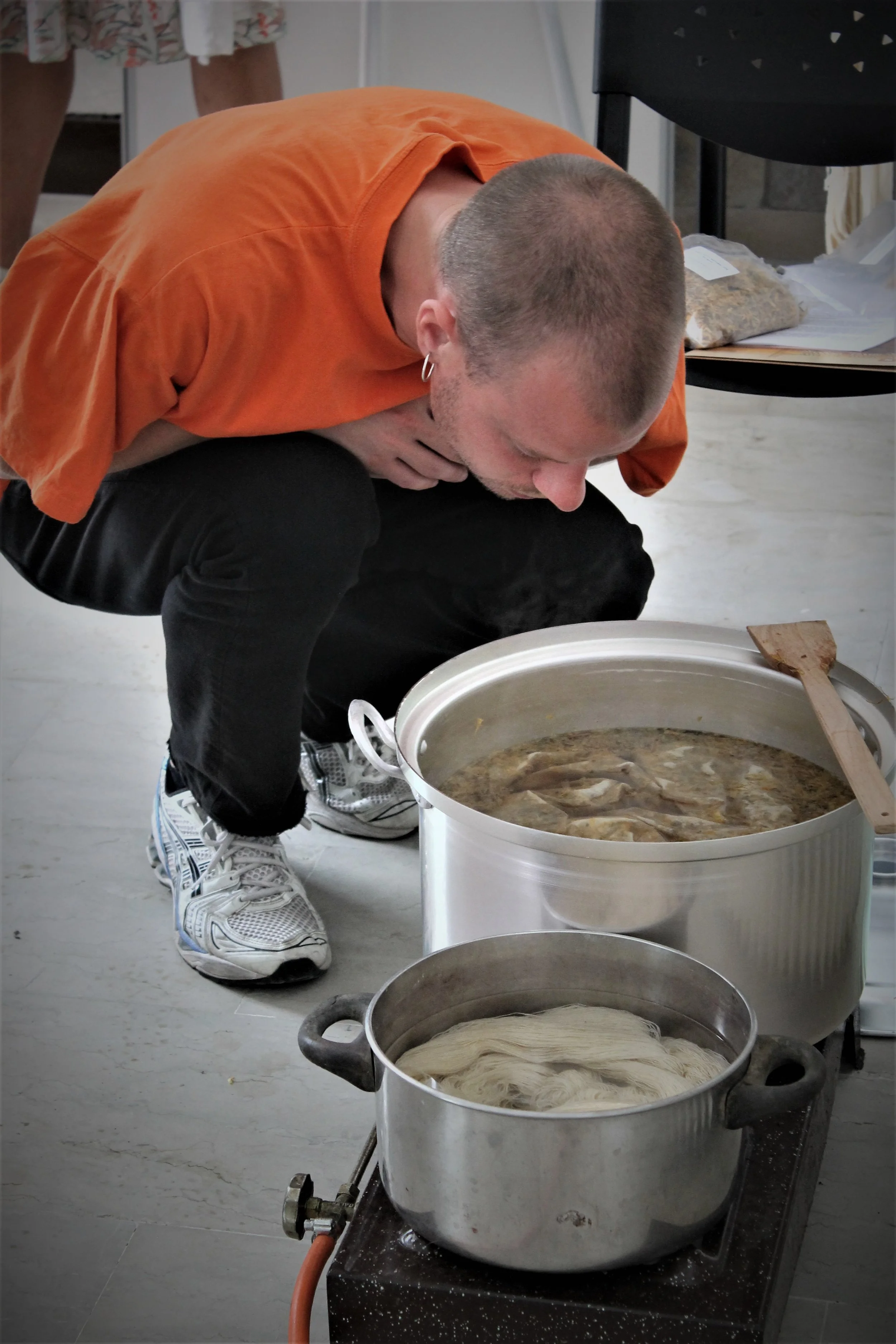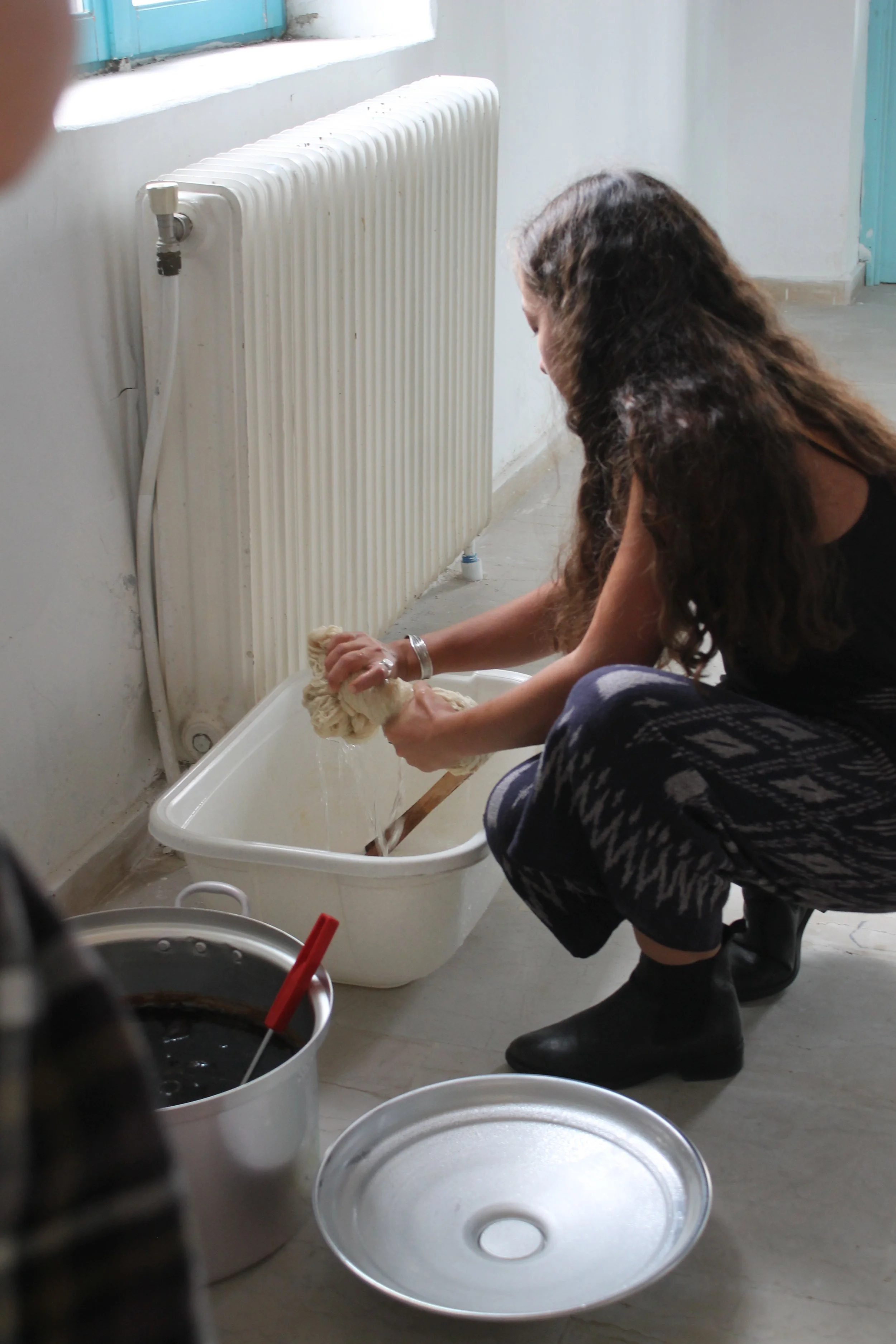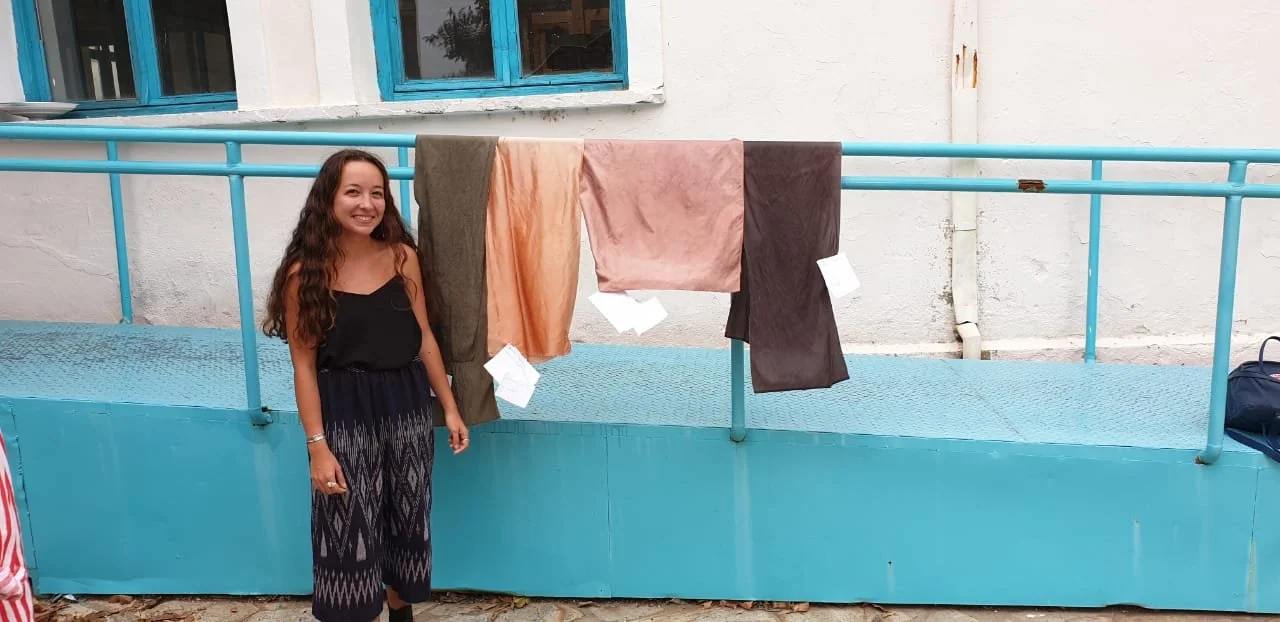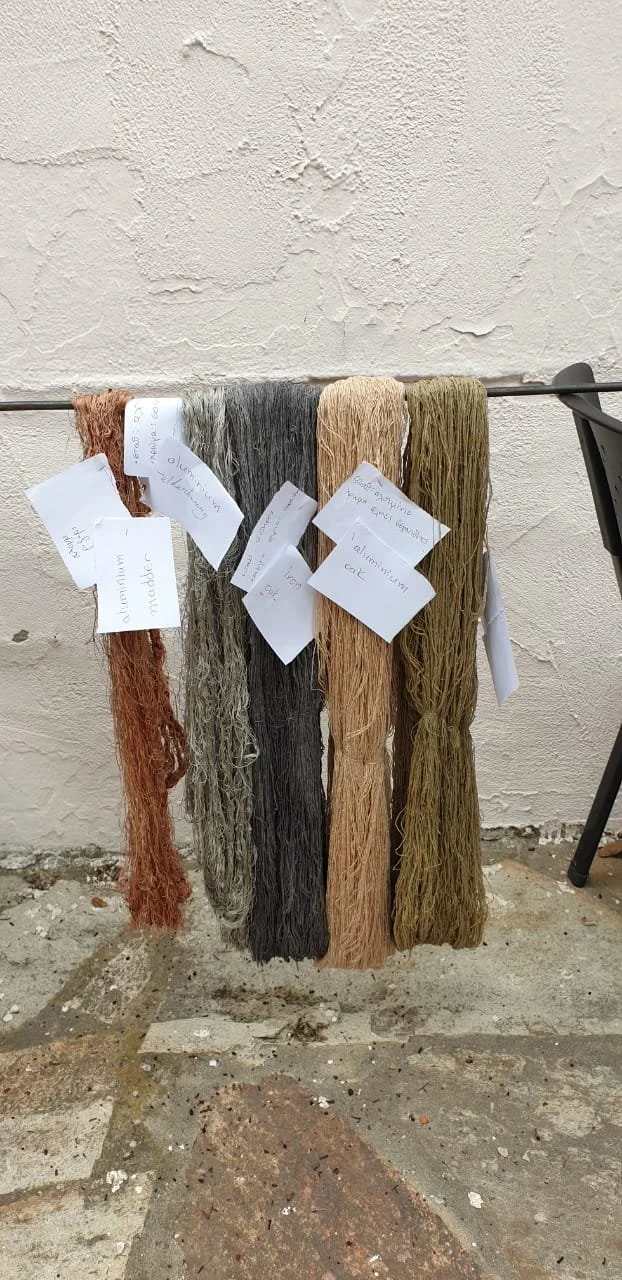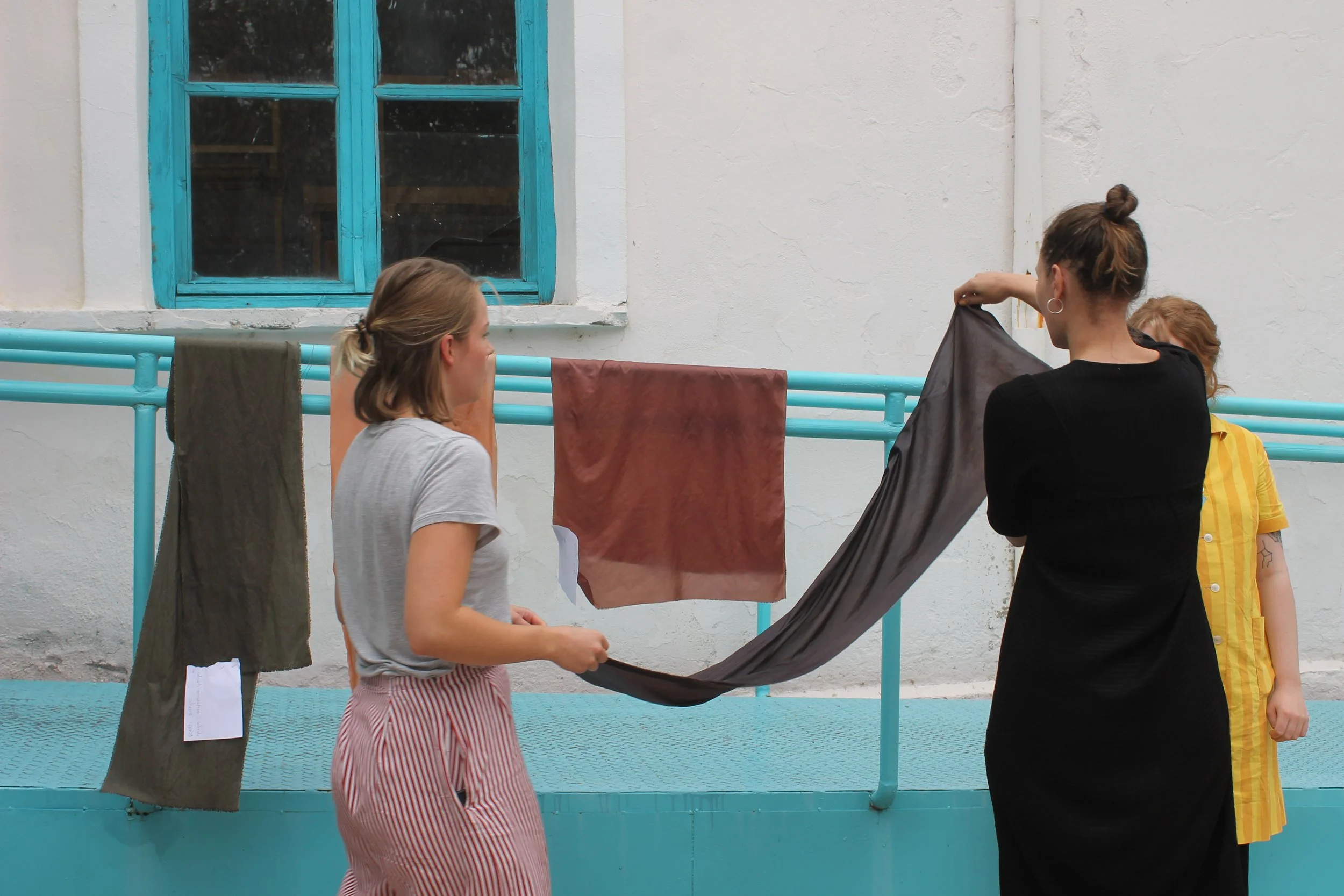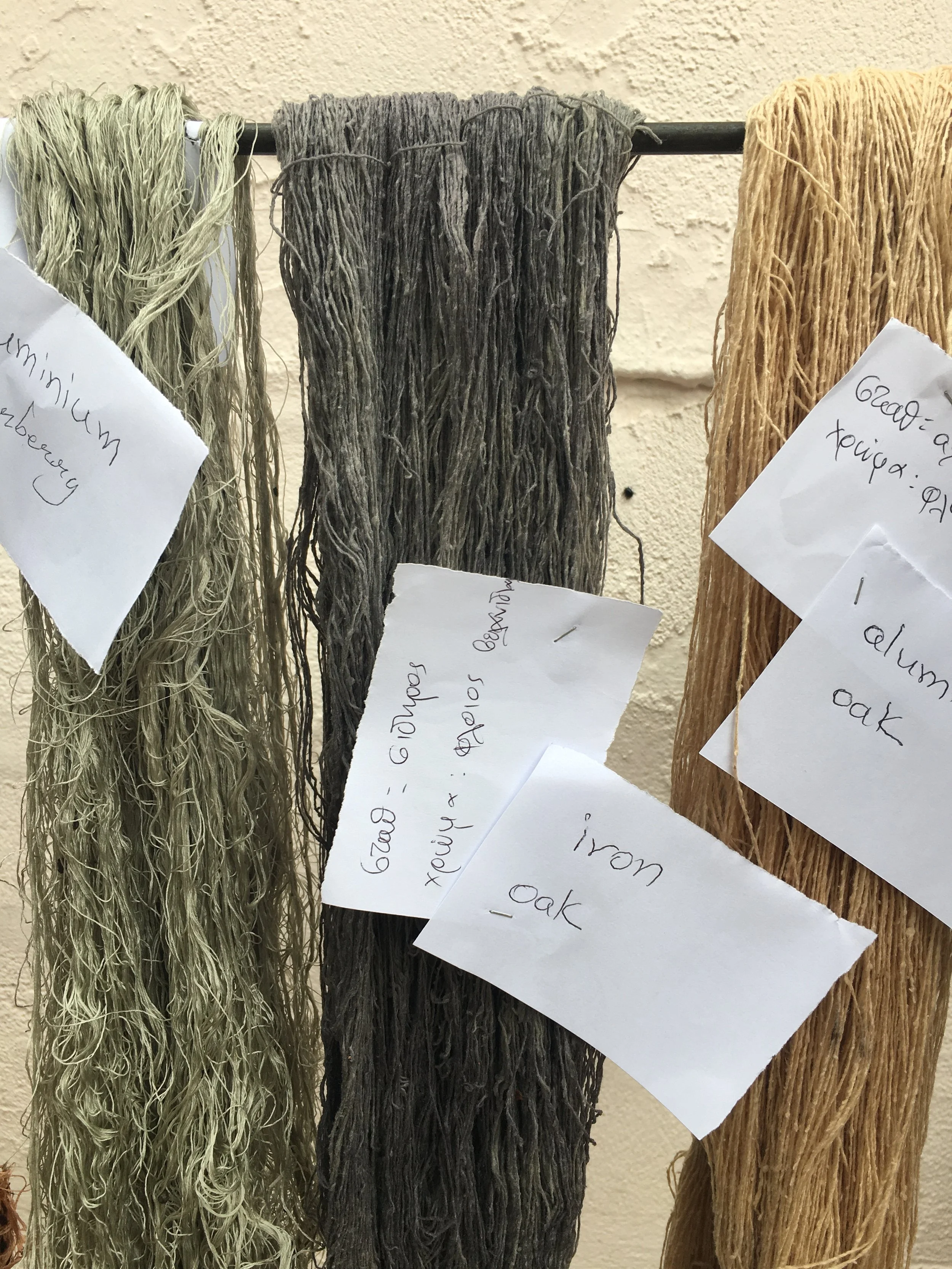Collaboration with Tsiakiris Silkhouse
In the beginning of August I was invited to visit Soufli, otherwise known as The Town of Silk.
Soufli is in the North of Greece, in the Evros area, close to Turkey. It is known for the silk industry that flourished in the 19th century.
I was invited there by Mr Tsiakiris who runs the Silk Tsiakiris company. He has been providing me with Greek silk and digitally printing my drawings and paintings on silk for my products this last year. His company is one of the oldest and largest silk businesses in Greece today.
In September, I went to Soufli for a few days, this time to teach two Natural Dyeing workshops.
Students from the Konstfack - University of Arts, Crafts and Design and students from the Athens School of Fine Arts were visiting Soufli for a few days to learn about silk production and different textile techniques.
After meeting Mr Tsiakiris in August, we decided to collaborate and I taught two Natural Dyeing Workshops to the art students that were visiting. It was an amazing experience and the first time I was teaching. After these workshops, I started hosting natural dyeing workshops in my studio in Athens too.
In these two workshops I briefly talked about natural dyeing traditions in Greece and then explained the process of natural dyeing. We used four natural materials: Madder roots, elderberries, oak bark and marigold flowers. We used two mordants: Aluminium Acetate (which is what I use for protein based fabrics) and Iron Water.
Madder roots contain alizarin which is one of the most valuable red dye pigments ever known. Madder is one of the most ancient dyes in existence and can be traced back as far back as 3000BC. Madder was cultivated throughout Europe and the Middle East.
Greece had loads of madder and you can still find some in the North of Greece. Unfortunately now its not cultivated anymore, but apparently it still grows in the wild.
One of the reasons why I love madder is that the colour possibilities are endless. From reds, to pinks, to browns, to oranges, corals and purples.
Marigold flowers are native to Southern Europe, and they can be grown in most temperate regions. The flowers give shades of pale yellows and olive-brown. We used dried Marigold for our experiments in these two workshops, however, there were marigolds growing in gardens all around Soufli. The flowers have healing properties and are used for creams and ointments. They soothe the sore skin, sunburn and wounds.
Elderberries can also be found in Greece. Elder is a common, fast-growing small tree or large bushy shrub. It's leaves, berries and bark are all dye sources. Elder was once regarded as a magical plant that kept the devil away. The berries are reach in vitamin C and are used to make jams, relishes, wine, juice and a drink for sore throats. Elderflower is commonly used as a skin cleanser. Fresh berries give purples and sometimes reds, while dried berries give shades of red and brown.
Oak is a very common Greek tree. All parts of oak contain tannin. Oak leaves, bark, and acorns also produce ochre, beige, and grey colours. The tannin from oak bark was extracted and used to tan hides for centuries.
We naturally dyed on silk yarn, raw silk yarn and many different silk fabrics. The results were all very beautiful, and everyone got small swatches of every colour to add to their swatches.
I really enjoyed teaching in both English and Greek and I am very happy I had the opportunity to collaborate with Mr Tsiakiris.
